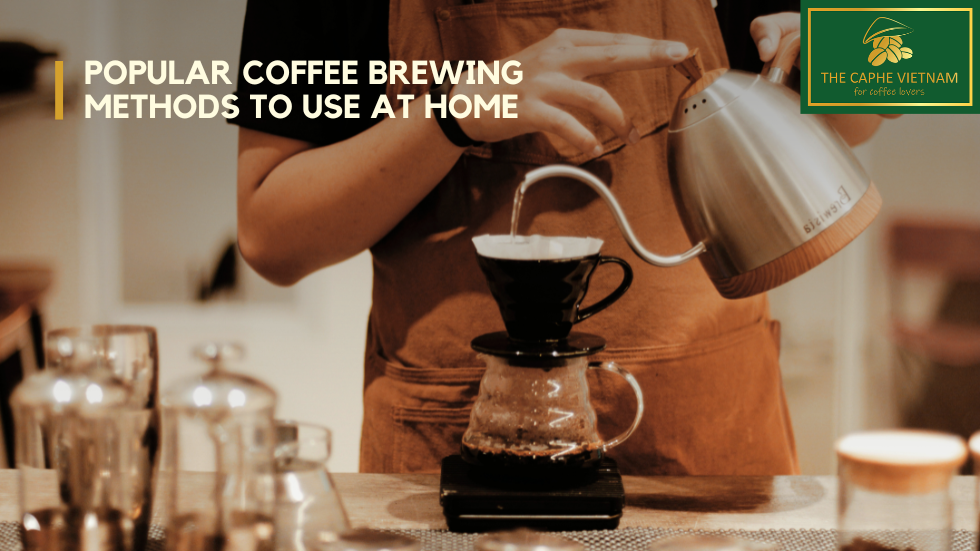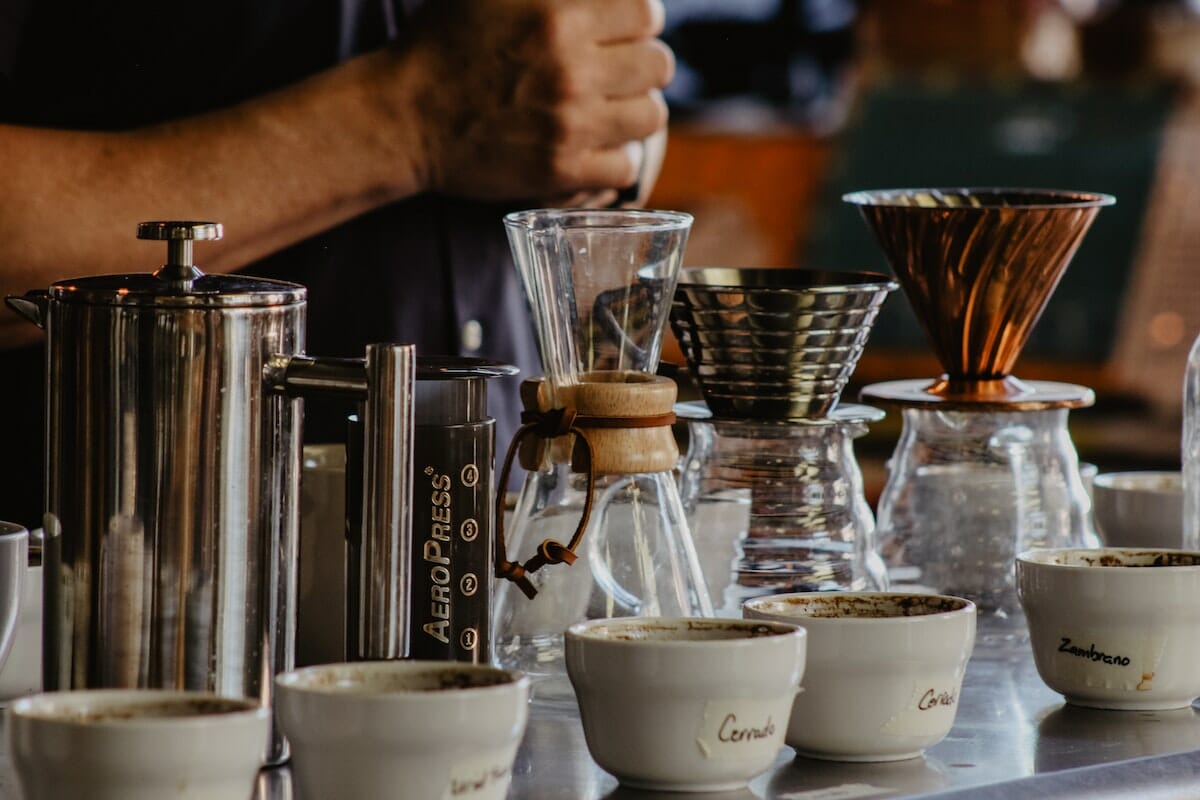Innovative Coffee Brewing Methods to Elevate Your Morning Routine
Innovative Coffee Brewing Methods to Elevate Your Morning Routine
Blog Article
Discovering the Art of Coffee Brewing: A Comprehensive Overview to Developing Your Mug
The art of coffee developing is a multifaceted discipline that merges science with individual expression, where the choice of beans, water high quality, and brewing approaches assemble to develop a refined sensory experience. Recognizing the subtleties of numerous coffee beans, particularly the differences in between Arabica and Robusta, is vital for any type of aficionado. The choice of suitable tools and meticulous interest to developing criteria can substantially affect the final end result. As we explore these aspects, one must consider exactly how even small modifications can cause profound modifications in flavor and fragrance-- what might these changes expose regarding your optimal cup?
Recognizing Coffee Beans
To genuinely appreciate the art of coffee brewing, one need to first comprehend the fundamental component: coffee beans. These little seeds, commonly originated from the Coffea plant, are critical in establishing the taste profile, aroma, and overall top quality of the brewed drink. Coffee beans mostly come under 2 categories: Arabica and Robusta. Arabica beans, known for their fragile tastes and greater acidity, are often favored by connoisseurs. On the other hand, Robusta beans possess a more powerful, more bitter preference and greater caffeine material, making them suitable for espresso blends.

Additionally, the handling approach-- whether cleaned, all-natural, or honey-- impacts the beans' final taste. Comprehending these components enables makers to select the right beans that straighten with their chosen taste account, ultimately boosting the coffee brewing experience. coffee brewing methods. This understanding is important for any individual desiring grasp the craft of brewing the perfect cup of coffee
Developing Methods Explained
Many enthusiasts find that the option of brewing technique considerably influences the final flavor and fragrance of their coffee. Each approach utilizes different removal strategies, influencing the coffee's character and richness.
Drip developing, one of the most preferred approaches, uses a device to leak warm water through ground coffee, generating a tidy and constant mug. French press, on the various other hand, immerses coffee grounds in hot water, permitting a fuller body and more durable flavor, as oils and great particles stay in the brew.
Pour-over developing offers a careful approach, where water is manually poured over coffee premises, permitting for exact control over extraction time and temperature, causing a nuanced and bright mug.
Coffee, a focused coffee brewed under pressure, is recognized for its strong taste and luscious texture, working as the base for different coffee drinks, consisting of coffees and cappucinos.
Essential Equipment Required
The structure of any effective coffee developing process exists in quality devices customized to have a peek here your recommended method. A reputable coffee grinder is critical; fresh ground beans dramatically enhance flavor and scent.
Next, consider your developing tool. Alternatives vary from drip coffee makers and pour-over configurations to French presses and coffee devices. Each technique offers distinctive flavor profiles and brewing strategies, so choose one that straightens with your taste preferences.
A specific range is likewise invaluable, enabling you to measure coffee and water accurately, which is essential for consistency. In addition, a thermostat can assist keep track of water temperature level, as it directly influences extraction top quality.
Learning Water High Quality
The quality of water made use of in developing coffee plays a considerable function in figuring out the final taste account of the cup. Numerous aspects add to water top quality, including mineral web content, pH degree, and overall purity. Ideally, water must be devoid of impurities and pollutants, as these can negatively affect the preference of coffee.
Minerals, such as calcium and magnesium, improve the extraction of tastes from the coffee grounds, while preserving a balanced pH level-- around 6.5 to 7.5-- is necessary for ideal removal. Water that is as well soft might lead to under-extraction, resulting in weak or sour flavors, while extremely tough water can create a bitter or severe mug.
For the finest outcomes, filtered water is recommended, as it decreases the visibility of chlorine and other unfavorable materials typically found in faucet water. In addition, think about making use of water with a Total Dissolved Solids (TDS) degree between 150-200 ppm, which is generally ideal for coffee developing. By grasping water quality, you can lay a strong structure for accomplishing a constantly excellent mug of coffee, permitting the one-of-a-kind qualities of your picked beans to radiate through.

Tips for Taste Improvement
Enhancing the flavor of your coffee can significantly raise your developing experience and draw out the one-of-a-kind nuances of your picked beans. To accomplish this, think about numerous key variables that influence taste.
To start with, the grind size plays a crucial duty. A finer grind raises extraction, causing bolder flavors, while a coarser grind returns a milder mug. coffee brewing methods. Adjust your grind according to your developing approach to achieve optimal outcomes
Secondly, try out mixture time. Over-extraction can result in resentment, while under-extraction cause a sour preference. Go for a mixture time that balances these extremes, typically between two to 4 minutes, depending upon your technique.
Furthermore, temperature is an important element. Brewing with water that is also hot can burn the coffee, while water that is too awesome may fail to extract sufficient taste. The ideal temperature range is 195 ° F look here to 205 ° F(90 ° C to 96 ° C)
Conclusion) )))) To conclude, the art of coffee brewing is a diverse method that needs a deep understanding of different components, including bean option, brewing methods, and water top quality. Proficiency of crucial devices and attention to detail in grind dimension, brew time, and temperature are important for accomplishing ideal removal. By incorporating these parts, coffee lovers can elevate their brewing methods, causing a cup that not only pleases personal choices but also showcases the abundant complexity of coffee tastes.
The art of coffee brewing is a multifaceted technique that combines scientific research with individual expression, where the option of beans, water top quality, and brewing methods assemble to develop a polished sensory experience.To absolutely value the art of coffee brewing, one need to first understand the fundamental component: coffee beans. Developing with water that is too hot can swelter the coffee, while water that is as well trendy might fall short to draw out ample taste. In final thought, the art of coffee brewing is a multifaceted method that calls for a deep understanding of different aspects, including bean option, brewing approaches, and water top quality. resource By integrating these parts, coffee fanatics can raise their developing techniques, resulting in a cup that not only pleases personal choices but additionally showcases the abundant complexity of coffee tastes.
Report this page